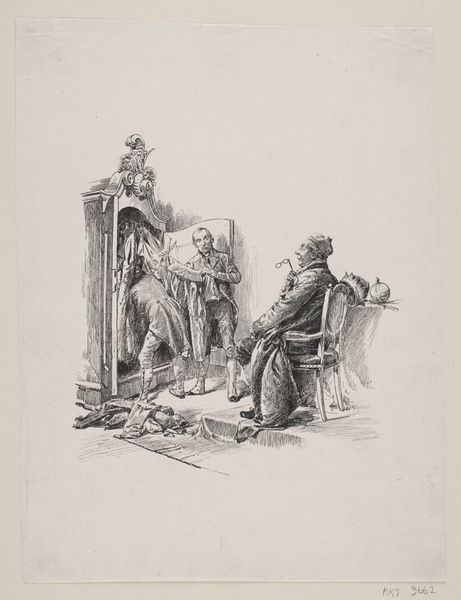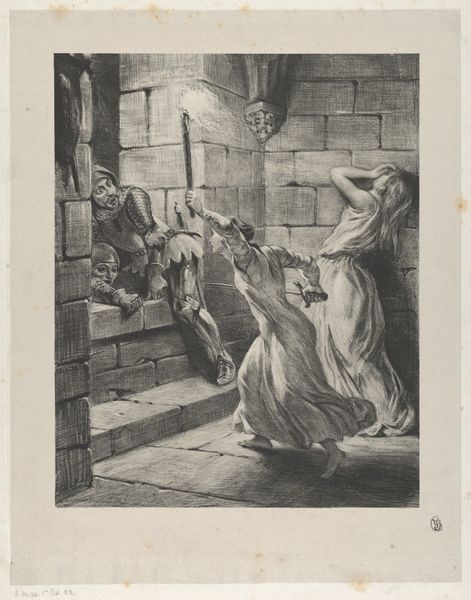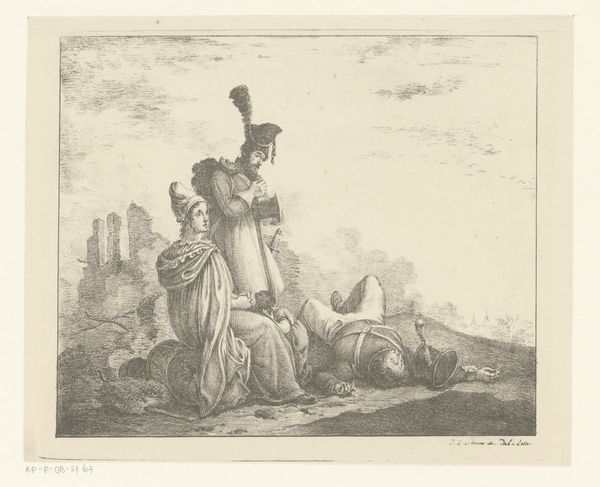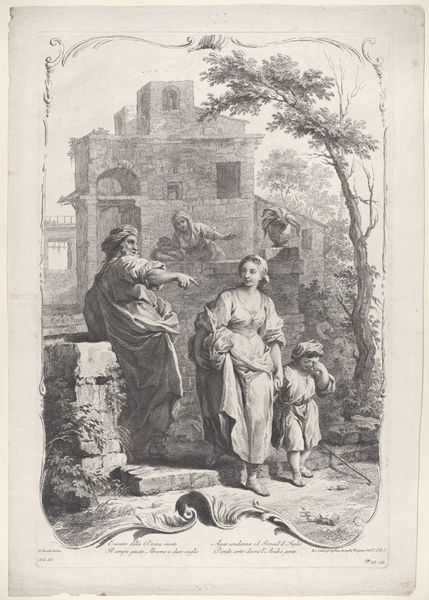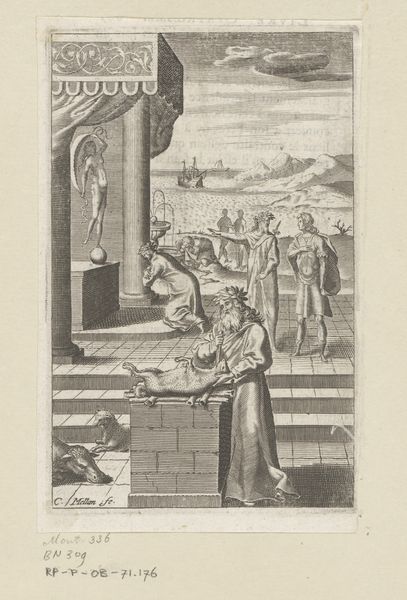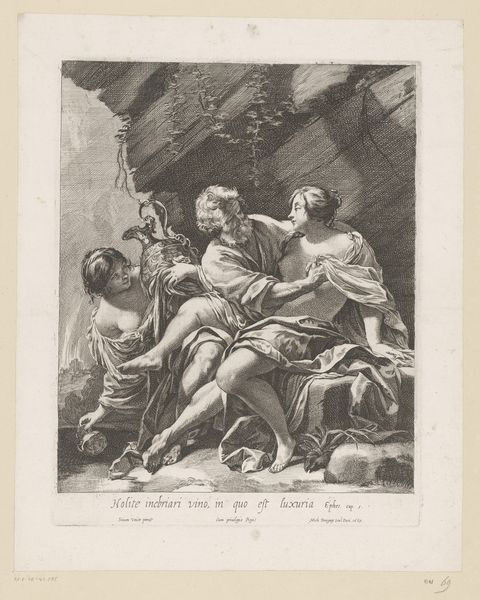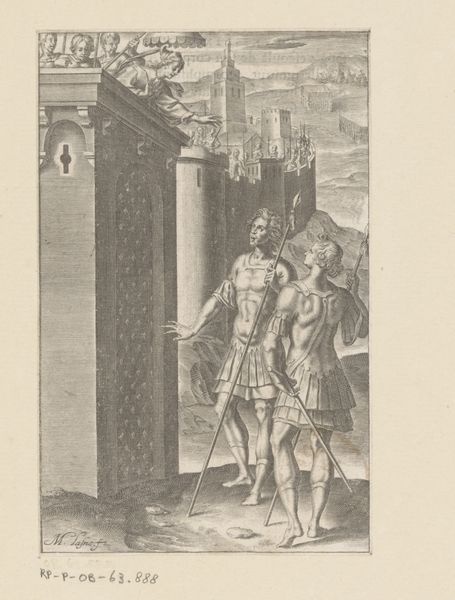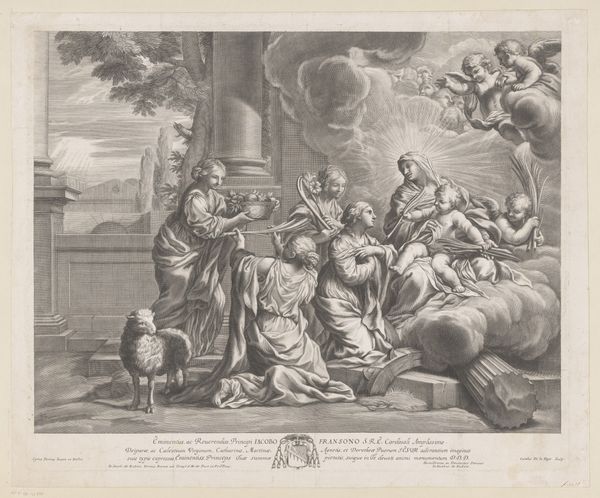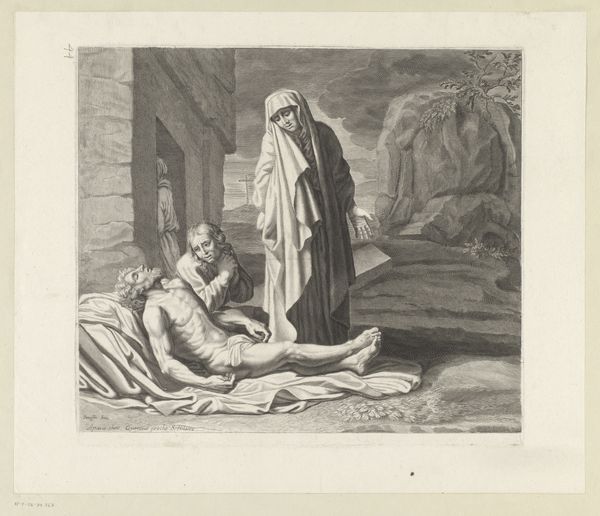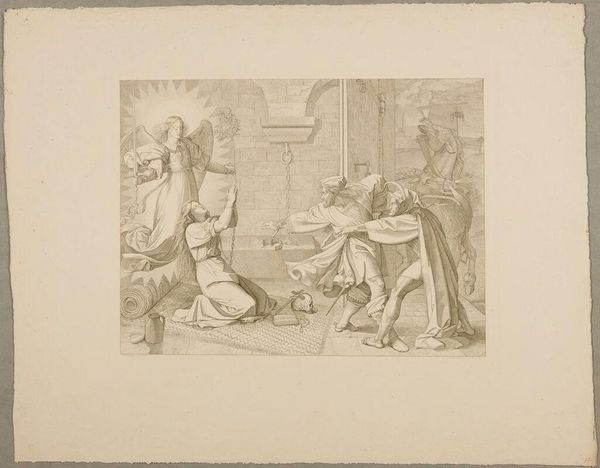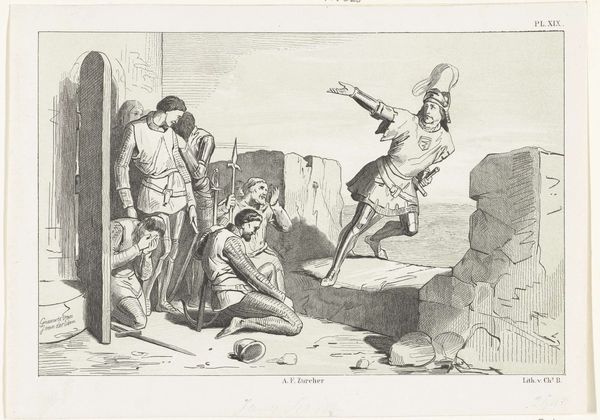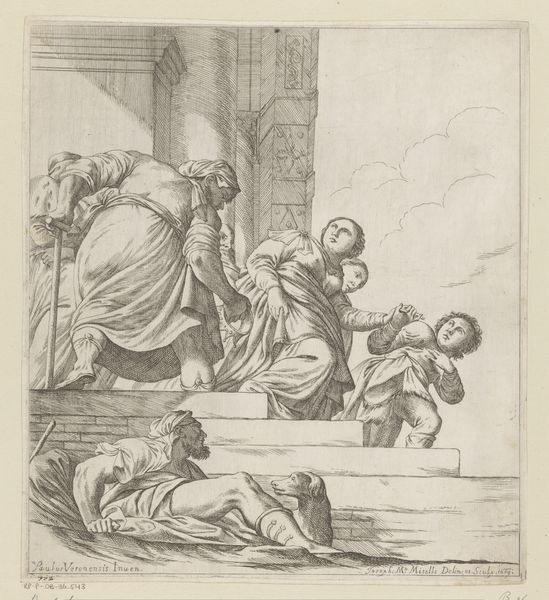
Dimensions: height 206 mm, width 258 mm
Copyright: Rijks Museum: Open Domain
Curator: Ah, this image by Richard Earlom, thought to originate somewhere between 1774 and 1778, is currently held in the Rijksmuseum. It depicts "The Liberation of St. Peter from Prison". A drawing using charcoal. Editor: My first thought is that it looks incredibly theatrical, like a scene from a baroque play—the angel especially. The strong contrast emphasizes a sense of drama. Curator: Indeed, observe the dynamism created by the diagonal lines, the composition's Baroque elements which infuse this figuration with tension. Notice the play of light and shadow which directs the viewer’s eye through the scene. The material lends a kind of rawness to the sacred narrative. Editor: You’re spot on with the rawness—it’s not your typical saintly, ethereal image. The angel looks more like she's hauling Peter out of a ditch rather than floating him to salvation. And Peter, he is like, so ready to just LEAVE. The lighting and color do play a lot with shadows, obscuring parts. Are those soldiers also partially shaded into invisibility, representing the slumber of temporal authority as divine intervention happens? Curator: Precisely. Semiotically, the shadow may denote doubt or the unconscious. Furthermore, the angel’s figure stands contrapuntally with the horizontal weight of Peter, as well as that broken beam there in the front which further enhances a sensation of imbalance. The composition leads to a questioning about agency, of divine power over man’s failings. Editor: Hmm. It’s a striking composition. It pushes me to consider ideas of liberation, faith, and questioning whether the charcoal and limited light represent some kind of artistic struggle to liberate oneself from visual expectations. The drama of the liberation, its energy, seems like the core of the entire drawing. It would be awesome as a tattoo. Curator: A resonant closing observation—suggesting that the aesthetic echoes within continue to instigate reflective possibilities beyond our immediate viewing experience. Editor: Right! The piece, therefore, acts as its own angel; constantly delivering new angles and possibilities out of artistic limbo.
Comments
No comments
Be the first to comment and join the conversation on the ultimate creative platform.
